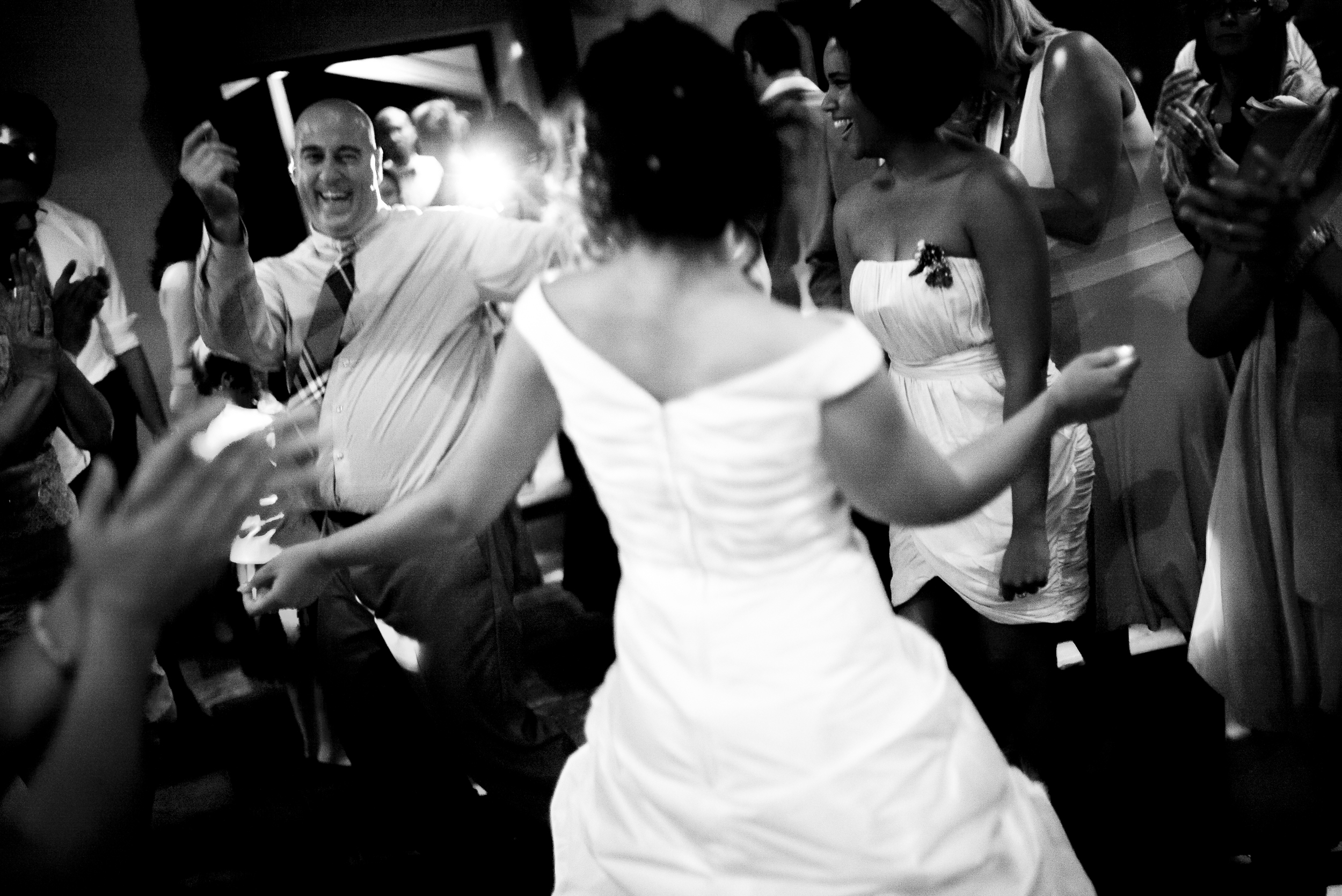Yesterday I read an article about high ISO photography and the quality of light. The author stated that with really bad and low light, it wasn’t always worth it taking a picture, because the technical quality of the picture wouldn’t be good enough. Instead he offered the readers his solution of using LED-light to brighten up the scene.
To me, a documentary wedding photographer, technical quality is less important than emotional impact. If the impact is there, the picture is worth taken. And the other way round: a technically perfect image, without emotional impact is not interesting to me at all. Cartier-Bresson said: Sharpness is a bourgeois concept. And in some way, he was right. Sometimes you do need sharpness, but sharpness and other technical qualities aren’t the most important things in a picture. I have to shoot in circumstances where most photographers would either use flash, or put their camera away. With the M9 I shot first dances at 2500 ISO, at 1.2 at 1/8th of a second. Of course these images weren’t sharp, but they conveyed the message. If I would have thrown in a big flashgun I wouldn’t have been able to shoot it in my unobtrusive way, but I would have destroyed the atmosphere as well. Now, with the M240 I can pump up the ISO to 6400 ISO and that gives me shorter shutter speeds, but I still need my 1.2 and sometimes I can’t shoot faster than 1/60th of a second. With people moving around, these won’t give you razor sharpness as well, but honestly, I love the way the images turn out. They’re grainy, but full of emotion and they show how the light was.
The picture that I attached to this blog was shot at 1.2 at 1/125th of a second at 3200 ISO. No, it isn’t sharp, but you may ask the bride if this picture was worth taking. I think you already know the answer.
The world is small and fast, because only an hour after posting this blog on Facebook, the author contacted me through Facebook and we had an interesting conversation about ambient light, flashguns and LED. Of course he didn’t mean that the things he stated in his article were true for all situations. Sometimes, for example during documentary wedding photography, you just need to work with the dim light and make the best of it. It turned out that the author doesn’t use flash or LED for 99% of the time. He even made some changes to his article. Thanks for doing so! The fact is, I know there are a lot of people that will still say that they’ll throw away pictures because they’re not sharp. If all photographers would have taken that advice, we wouldn’t have had Capa’s pictures of D-Day and many, many, many other great pictures that won many prices.
